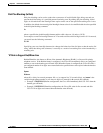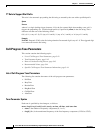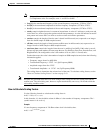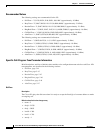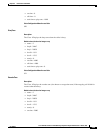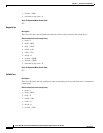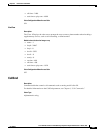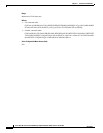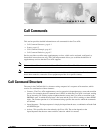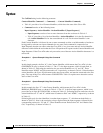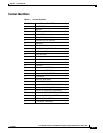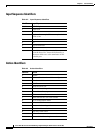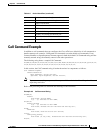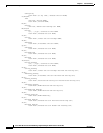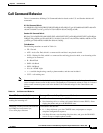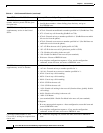
CHAPTER
6-1
Cisco ATA 186 and Cisco ATA 188 Analog Telephone Adaptor Administrator’s Guide (SIP)
OL-3410-01
6
Call Commands
This section provides detailed information on call commands for the Cisco ATA:
• Call Command Structure, page 6-1
• Syntax, page 6-2
• Call Command Example, page 6-5
• Call Command Behavior, page 6-7
Service providers can offer many supplementary services, which can be activated, configured, or
deactivated in more than one way. The CallCmd parameter allows you to define the behavior of
supplementary services that the Cisco ATA supports.
Note The term Cisco ATA refers to both the Cisco ATA 186 and the Cisco ATA 188, unless otherwise stated.
Note This section contains call command information for the United States and Sweden. For information
about other countries, contact the Cisco equipment provider for a specific country.
Call Command Structure
The entry in the CallCmd field is a character string composed of a sequence of instructions, which
consist of a combination of three elements:
• Context—The Cisco ATA supplementary service operation is dependent upon a state and transition
process. For example, the most common state is IDLE, in which the Cisco ATA is on-hook, waiting
for an incoming call. Picking up the telephone handset causes the Cisco ATA to transition to the
PREDIAL state, in which the user hears a dial tone and the Cisco ATA is waiting to detect DTMF
digits. The Context portion of a Call Command string specifies the state for which the commands
are defined.
• Input-Sequence—The input sequence is simply the input from the user, a combination of hook-flash
and DTMF digits.
• Action—This specifies the action taken by the Cisco ATA. The action depends on the
Input-Sequence that the user enters and the Context in which it is entered.



